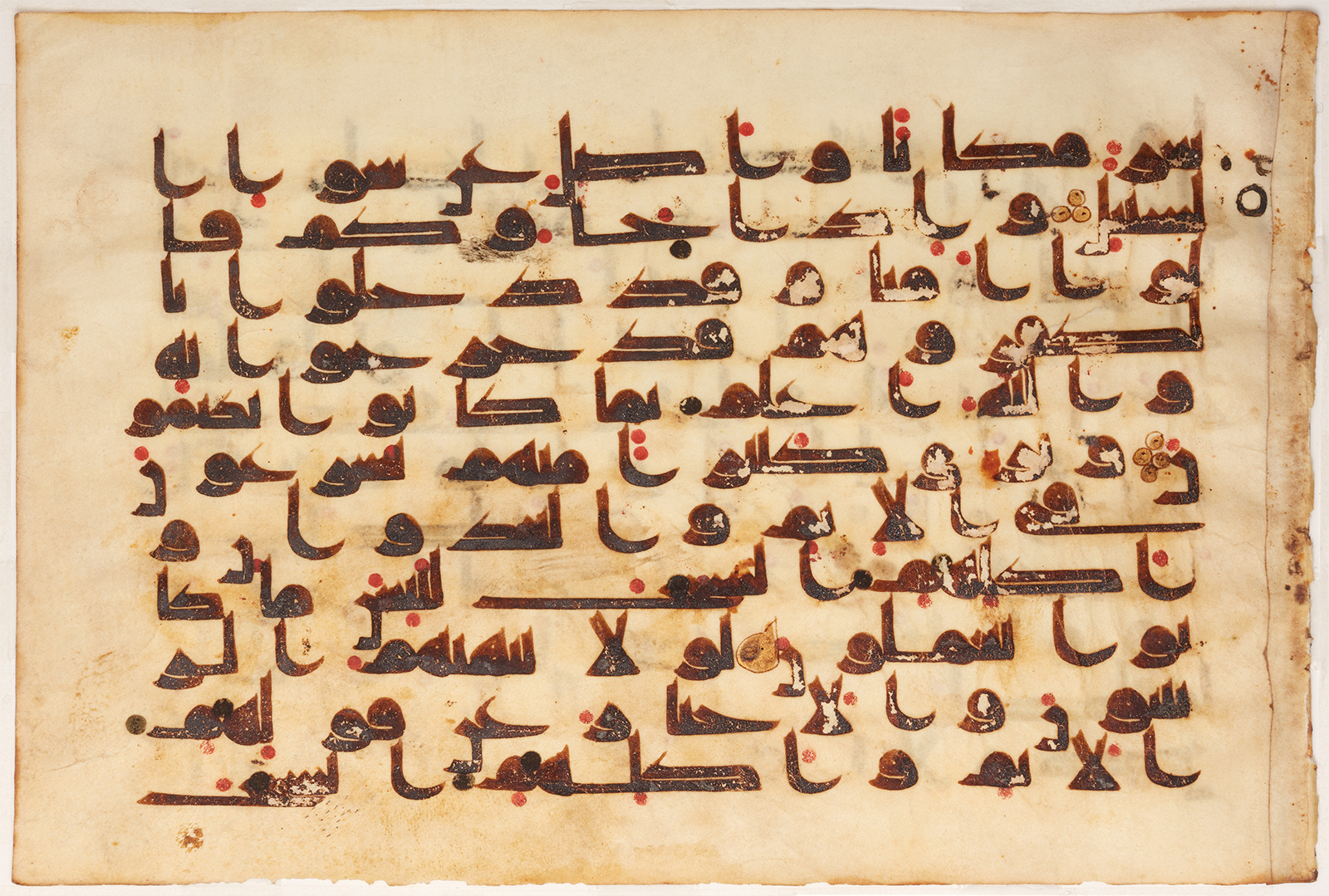Click on the image to zoom
Folio from a Qur’an Manuscript
Q5: 60-63
- Accession Number:AKM300
- Place:Near East or North Africa
- Dimensions:15.6 x 23.2 cm
- Date:9th - 10th centuries
- Materials and Technique:ink and gold on parchment
The secrets of papermaking had reached from China to the Near East and North Africa by the mid 8th century. The use of paper, however, was reserved mostly for administrative documents. Until the end of the 10th century, Qur’ans, like some of the examples shown here, were still being copied on parchment, a fine animal skin that is stretched, limed, and scraped to produce a uniform writing surface. These earlier parchment examples mostly had a horizontal format, which was replaced with vertical formats in later paper manuscripts. Dots, especially in red, were used for vocalization of the text. Various decorative elements were used to indicate the end of each verse, such as the triangular arrangement of six dots in AKM481. Golden roundels that contain verse count were usually used to indicate the fifth, tenth, or other number of verses.
— Filiz Çakır Phillip
References
Bloom, Jonathan. “The introduction of Paper to the Islamic Lands and the development of the illustrated Manuscripts,” Muqarnas 17 (2000): 17–23. ISBN: 9789004116696
Fouad George, Alain. “The Qur’an, Arabic Calligraphy and the Early Civilization of Islam.” A Companion to Islamic Art and Architecture, eds. Finbarr Barry Flood and Gülru Necipoğlu. Malden, MA: Wiley-Blackwell, 2017, 109–29. ISBN: 9781119068662
---. “Coloured Dots and the Question of Regional Origins in Early Qur’ans. Parts I and II.” Journal of Qur’anic Studies 17, nos. 1 and 2 (2015): 1–44; 75–102. https://doi.org/10.3366/jqs.2015.0178
Gruber, Christiane, ed. The Islamic Manuscript Tradition: Ten Centuries of Book Arts in Indiana University Collections. Bloomington: Indiana University Press, 2009. ISBN:9780253353771
Note: This online resource is reviewed and updated on an ongoing basis. We are committed to improving this information and will revise and update knowledge about this object as it becomes available.


